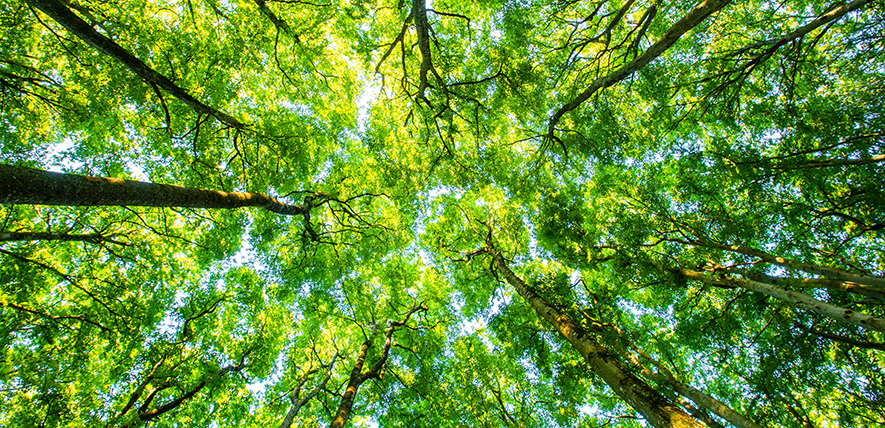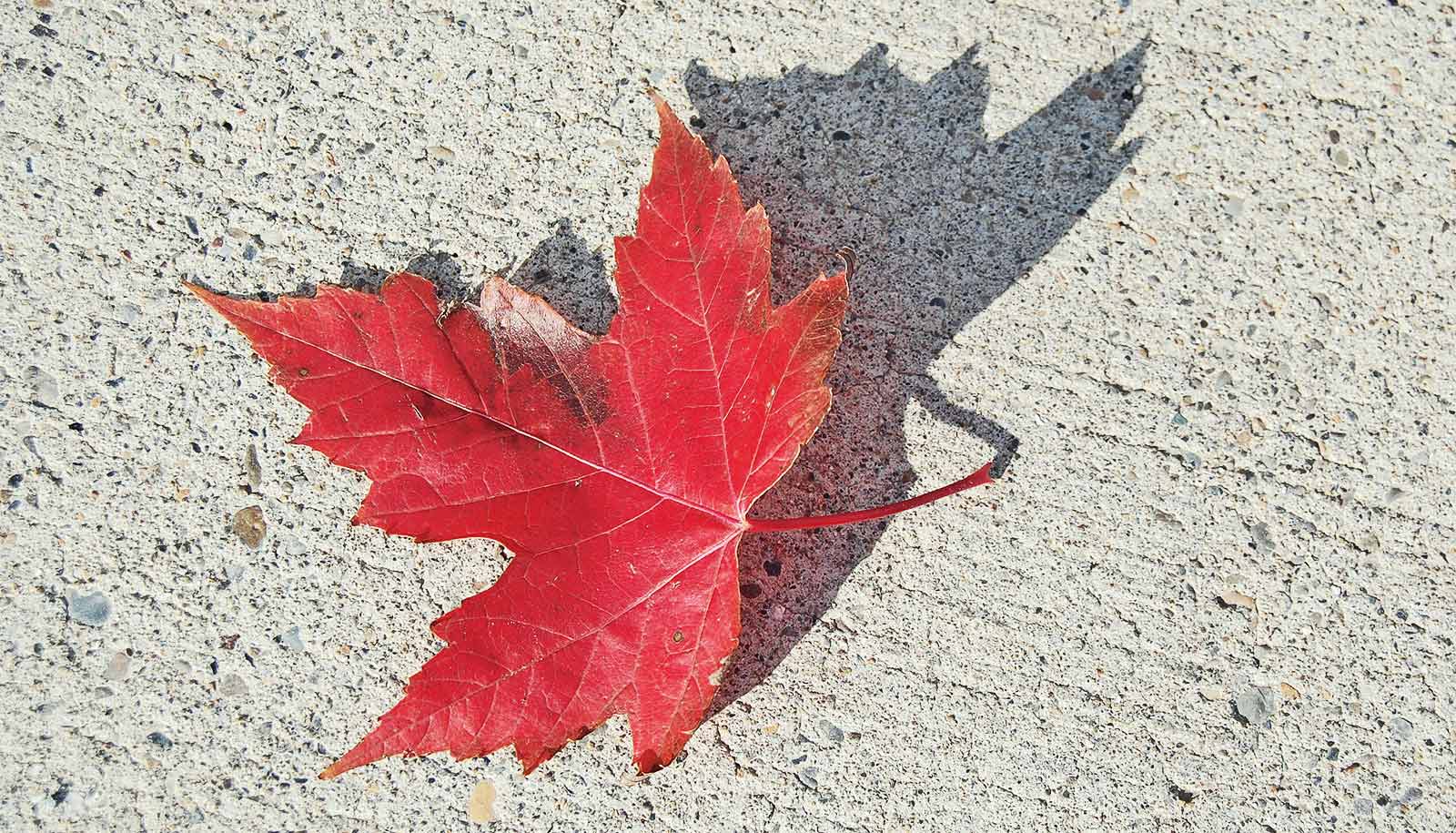
Treetops seen from a low angle
Credit: Baac3nes via Getty Images
Phone-based measurements provide fast, accurate information about the health of forests
Researchers have developed an algorithm that uses computer vision techniques to accurately measure trees almost five times faster than traditional, manual
The researchers, from the University of Cambridge, developed the algorithm, which gives an accurate measurement of tree diameter, an important measurement used by scientists to monitor forest health and levels of carbon sequestration.
The algorithm uses low-cost, low-resolution LiDAR sensors that are incorporated into many mobile phones, and provides results that are just as accurate, but much faster, than manual measurement techniques. The results are reported in the journal Remote Sensing.
The primary manual measurement used in forest ecology is tree diameter at chest height. These measurements are used to make determinations about the health of trees and the wider forest ecosystem, as well as how much carbon is being sequestered.
While this method is reliable, since the measurements are taken from the ground, tree by tree, the method is time-consuming. In addition, human error can lead to variations in measurements.
“When you’re trying to figure out how much carbon a forest is sequestering, these ground-based measurements are hugely valuable, but also time-consuming,” said first author Amelia Holcomb from Cambridge’s Department of Computer Science and Technology. “We wanted to know whether we could automate this process.”
Some aspects of forest measurement can be carried out using expensive special-purpose LiDAR sensors, but Holcomb and her colleagues wanted to determine whether these measurements could be taken using cheaper, lower-resolution sensors, of the type that are used in some mobile phones for augmented reality applications.
Other researchers have carried out some forest measurement studies using this type of sensor, however, this has been focused on highly-managed forests where trees are straight, evenly spaced and undergrowth is regularly cleared. Holcomb and her colleagues wanted to test whether these sensors could return accurate results for non-managed forests quickly, automatically, and in a single image.
“We wanted to develop an algorithm that could be used in more natural forests, and that could deal with things like low-hanging branches, or trees with natural irregularities,” said Holcomb.
The researchers designed an algorithm that uses a smartphone LiDAR sensor to estimate trunk diameter automatically from a single image in realistic field conditions. The algorithm was incorporated into a custom-built app for an Android smartphone and is able to return results in near real time.
To develop the algorithm, the researchers first collected their own dataset by measuring trees manually and taking pictures. Using image processing and computer vision techniques, they were able to train the algorithm to differentiate trunks from large branches, determine which direction trees were leaning in, and other information that could help it refine the information about forests.
The researchers tested the app in three different forests – one each in the UK, US and Canada – in spring, summer and autumn. The app was able to detect 100% of tree trunks and had a mean error rate of 8%, which is comparable to the error rate when measuring by hand. However, the app sped up the process significantly and was about four and a half times faster than measuring trees manually.
“I was surprised the app works as well as it does,” said Holcomb. “Sometimes I like to challenge it with a particularly crowded bit of forest, or a particularly oddly-shaped tree, and I think there’s no way it will get it right, but it does.”
Since their measurement tool requires no specialised training and uses sensors that are already incorporated into an increasing number of phones, the researchers say that it could be an accurate, low-cost tool for forest measurement, even in complex forest conditions.
The researchers plan to make their app publicly available for Android phones later this spring.
The research was supported in part by the David Cheriton Graduate Scholarship, the Canadian National Research Council, and the Harding Distinguished Postgraduate Scholarship.
Reference: Amelia Holcomb, Linzhe Tong, and Srinivasan Keshav. ‘Robust Single-Image Tree Diameter Estimation with Mobile Phones.’ Remote Sensing (2023). DOI: 10.3390/rs15030772


